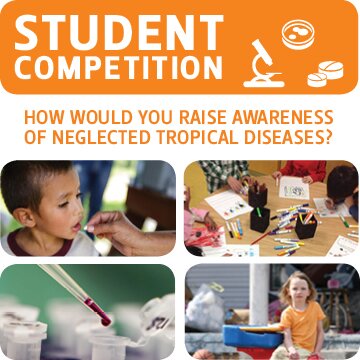 Today we’ve posted an essay by Juan Ulises Rojo, a graduate student at Texas Tech University Health Sciences Center, and one of five winners of a student competition on raising awareness of neglected tropical diseases (NTDs) — a group of parasitic, viral and bacterial infections that afflict mainly those living in extreme poverty.
Today we’ve posted an essay by Juan Ulises Rojo, a graduate student at Texas Tech University Health Sciences Center, and one of five winners of a student competition on raising awareness of neglected tropical diseases (NTDs) — a group of parasitic, viral and bacterial infections that afflict mainly those living in extreme poverty.
The writing contest and related outreach competition are associated with a Sept. 29-30 Baker Institute conference on NTDs in the U.S. and Mexico. One winning essay will be featured here each week leading up the conference.
The public is invited to attend the Baker Institute NTD conference, but an RSVP is required. Please click here for more information and to register for the event.
With the spread of globalization and the Internet, an awareness campaign has the potential to reach millions of people and educate them about neglected tropical diseases (NTDs). I propose the creation of a new campaign, called Tropical Diseases Campaign, to reach people through social media and events.
The Tropical Diseases Campaign (TDC) will have a website with three main components: a YouTube channel, a blog and a “take action” portal with the goal of reaching as many people as possible. First, an active YouTube channel linked to the TDC website will broadcast short, five to 10 minute clips about different NTDs. Individual videos about each NTD will present and explain information in general language, and new videos will be uploaded on a regular basis. These videos will present various aspects of tropical diseases, including causative agents, epidemiology, clinical cases, current treatments and preventive strategies. Viewers will be encouraged to share the video and visit the TDC website. The purpose of the short clips is to make the information accessible — people can watch the videos at any time, and the videos leave them with a message. Also, YouTube channels are popular because of the profit earned by the number of views and advertisements. The money earned from the YouTube channel can be income for the self-supporting TDC.
The blog component of TDC will be designed to invite people to share ideas, anecdotes, videos and photos about their experiences with NTDs. The purpose of the blog is to give a voice to those who have experienced NTDs firsthand. For example, physicians, scientists and people who live in endemic areas can all share their experiences.
The final main component of the Tropical Diseases Campaign website is the “take action” portal. This part of the website will provide links and information about volunteer opportunities to help people living in endemic areas, job positions related to treating NTDs and research opportunities. This section will also provide information about universities that have ongoing NTD-related research for students interested in graduate school. The “take action” portal will also include a donation option that will support people living in endemic areas.
Although there are a number of websites that provide sources and information about NTDs, few people are aware of these websites, and thus the message is not able to reach the public. The main challenge for the success of TDC is to reach a large audience and encourage them to take action.
There are three ways people can make a difference through the Tropical Diseases Campaign: 1) create partnerships with universities, 2) sell merchandise, and 3) organize an NTDs awareness walk. TDC can create partnerships with universities and promote student clubs that focus on NTDs awareness. Students can actively participate in the website by making videos, writing for the blog or making donations. Another way to promote awareness of NTDs is merchandise. In fact, merchandise has played a strong role in promoting awareness of diabetes, breast cancer and HIV/AIDS. T-shirts, bracelets, ribbons and bumper stickers are commonly used to invite people to participate in battling these diseases. The TDC could also sell merchandise to support awareness of NTDs. Finally, organizing walks or runs can also help engage and educate people about a cause. In fact, the Making Strides Against Breast Cancer walk organized by the American Cancer Society is a powerful event that engages the community to increase awareness and raise money. The same approach can be implemented by the TDC. A shoeless mile-long walk for NTD awareness could bring the community together as well as secure sponsors, in order to provide donations that will be used to treat, prevent and research NTDs. More importantly, this event will bring media attention to reach more people who can participate in the campaign.
While this proposal may appear broad, we need to keep in mind that no single approach will be effective in spreading awareness of NTDs. It is important to use as many resources as possible to reach people and educate them about neglected tropical diseases. Hopefully, in the near future, with the help of the TDC, these diseases will no longer be neglected.
Juan Ulises Rojo is a second-year graduate student researching schistosomiasis at Texas Tech University Health Sciences Center in Lubbock. Raised in Ciudad Juárez, México, Rojo moved to the United States after high school and attended the University of Texas at El Paso. He was later accepted into the National Institute of Minority Health and Heath Disparities International Research Training program, and learned more about parasitic diseases in rural communities at the University of Costa Rica. He graduated with a B.S. in clinical laboratory science from UT El Paso in 2012 and worked as a medical technologist for one year before deciding to enter graduate school. Rojo plans to continue a career focused on the study and eradication of NTDs.
This essay originally appeared on the Baker Institute Blog.
